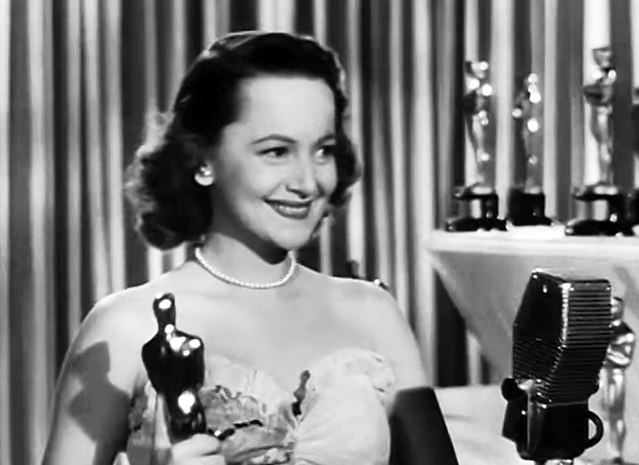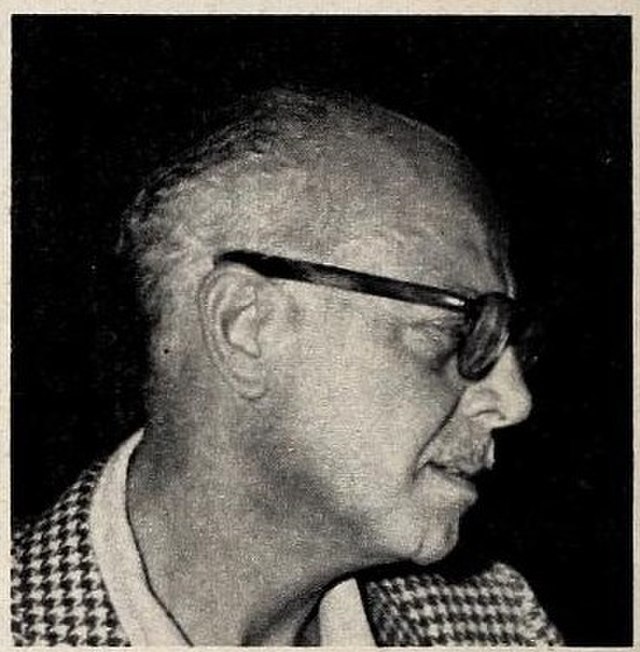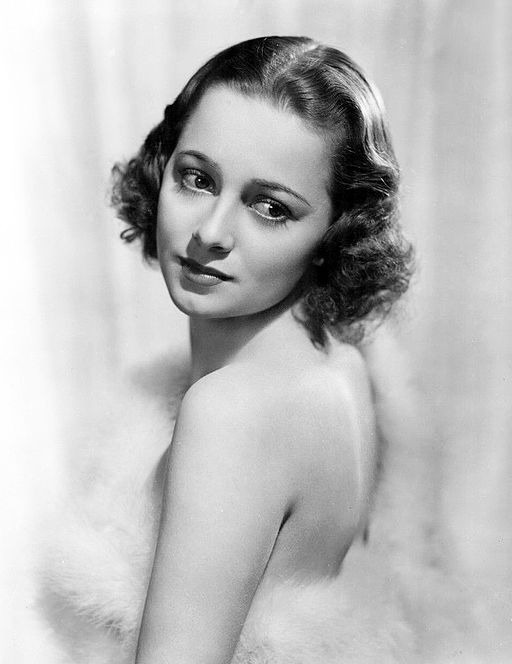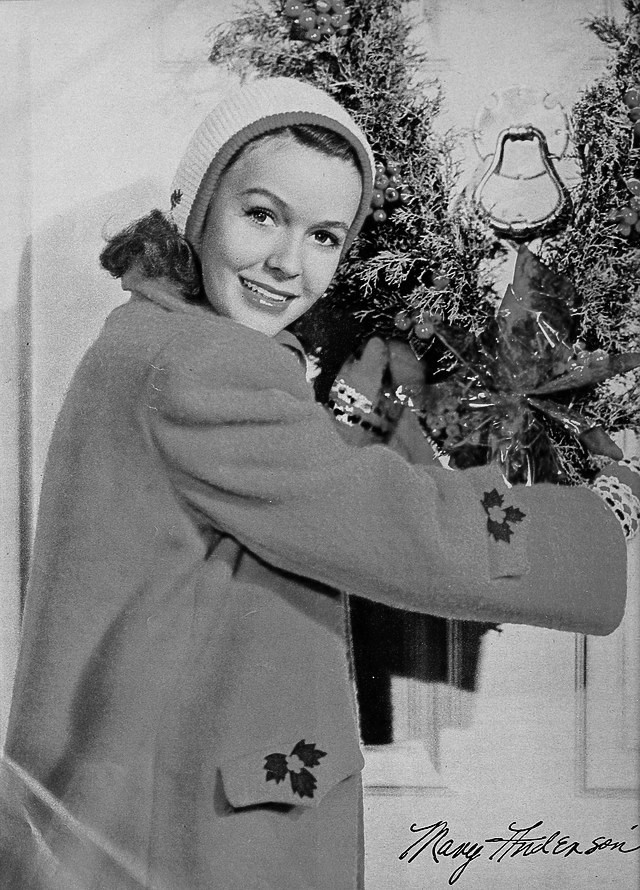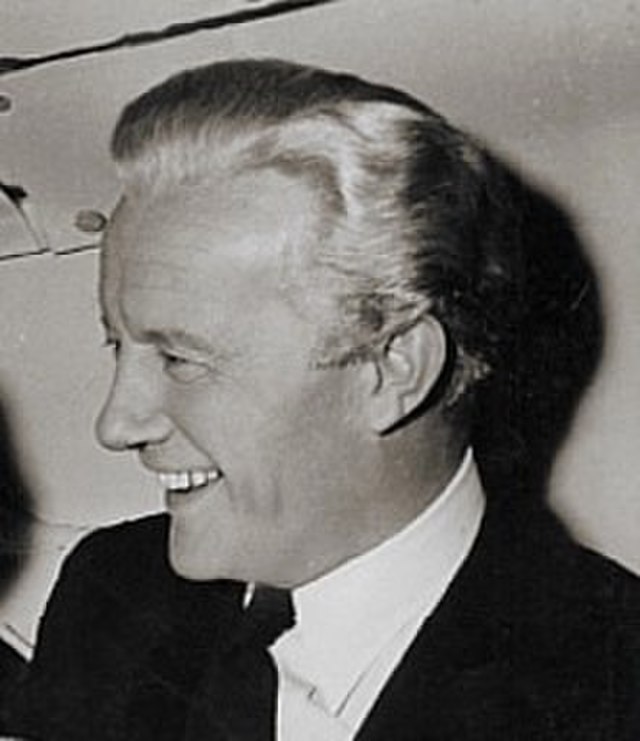To Each His Own – 1946
Summary
To Each His Own is a deeply moving melodrama centered around love, sacrifice, and the societal norms that define a woman’s place in the world. The film follows Josephine "Jody" Norris (Olivia de Havilland), a small-town American woman who experiences love and loss in a way that changes the course of her life.
The story unfolds in a nonlinear fashion, beginning in wartime London, where Jody, now a mature and seemingly aloof woman, works as a fire warden. She crosses paths with Lord Desham (Roland Culver), a charming aristocrat who immediately senses a sadness in her and offers companionship. As their conversations deepen, the audience is drawn into the tragic backstory of Jody’s life.
Decades earlier, Jody was a bright, ambitious young woman living in the small town of Piersen Falls, where she worked in her family’s drugstore. Her world changes when she meets Captain Bart Cosgrove (John Lund), a dashing pilot on leave during World War I. They share a whirlwind romance that results in Jody becoming pregnant, but before they can build a life together, Bart is killed in combat. Unmarried and with no socially acceptable way to raise a child on her own, Jody is forced to make a heart-wrenching decision.
In a desperate act to ensure her son’s future, she arranges for the baby, Gregory, to be adopted by a childless couple—her friends Alex (Phillip Terry) and Corinne Piersen (Mary Anderson). Initially believing she can remain involved in her child’s life, she soon realizes that Corinne, insecure and jealous, is determined to push her away. Though Jody is the biological mother, she is treated as an outsider, a mere acquaintance, and is eventually cut off from Gregory completely.
Over the years, Jody amasses wealth and success in the cosmetics industry, determined to create a name for herself in a world that once rejected her. She tries several times to reclaim her son but faces rejection at every turn, as he grows up believing Corinne is his true mother. Her longing turns into a quiet, dignified suffering, and she resigns herself to a life without Gregory.
The film returns to wartime London, where Jody, now a woman of status and independence, finds herself confronted with the past once more. In an emotional climax, she unexpectedly reunites with Gregory, now a grown man and an officer in the Air Force, who is about to be married. He does not recognize her as his mother, but in a moment of bittersweet reconciliation, Jody chooses not to reveal the truth, allowing him to move forward without the burden of knowing the sacrifice she made.
Lord Desham, witnessing Jody’s emotional turmoil, offers her companionship and perhaps a second chance at happiness. The film ends on a poignant note, emphasizing Jody’s strength, resilience, and the profound cost of a mother’s love.
________________________________________
Analysis
Themes of Sacrifice and Maternal Love
At the heart of To Each His Own is the theme of selfless maternal love. Jody’s sacrifice is not only heartbreaking but also emblematic of the societal pressures placed on women at the time. The stigma of unwed motherhood forces her to give up her son despite her deep devotion to him. Her struggle reflects the broader theme of how society dictates morality and punishes women for choices that men often walk away from unscathed.
Character Study: Jody Norris
Olivia de Havilland delivers an extraordinary performance as Jody, capturing the character’s transition from hopeful young woman to an emotionally wounded but resilient individual. Jody’s journey is one of endurance—she transforms from an innocent girl in love to a sophisticated, world-weary woman who has learned to navigate life’s disappointments. Her character arc is one of quiet strength; she never gives in to bitterness but instead channels her pain into building a successful career.
Societal Expectations and Gender Roles
The film highlights the rigid expectations imposed on women in early 20th-century America. Jody is denied agency over her own child simply because she is unmarried, while the adoptive mother, Corinne, despite being insecure and manipulative, is given the societal privilege of motherhood. This contrast underscores the film’s critique of the era’s double standards regarding women’s roles.
Cinematography and Direction
Mitchell Leisen’s direction lends the film a sweeping elegance, using soft lighting and meticulous framing to accentuate Jody’s isolation. Daniel L. Fapp’s cinematography enhances the film’s emotional weight, particularly in moments of longing and heartbreak—such as Jody watching her son grow up from a distance.
Music and Emotional Impact
Victor Young’s score amplifies the film’s emotional depth, using orchestral swells to underscore key moments of pain and nostalgia. The music serves as an emotional bridge between Jody’s past and present, reinforcing the sense of lost time and unfulfilled dreams.
Bittersweet Ending
The film’s conclusion is neither tragic nor conventionally happy—it is, above all, realistic. Jody does not get a grand reunion with her son, nor does she reclaim what was taken from her. Instead, she finds a kind of quiet acceptance. Her relationship with Lord Desham suggests that even though she has lost so much, she still has a chance at companionship and happiness.
________________________________________
Conclusion
To Each His Own is a masterful blend of melodrama and emotional realism, exploring themes of sacrifice, societal constraints, and the quiet endurance of love. Olivia de Havilland’s Oscar-winning performance anchors the film, making it a deeply affecting and unforgettable experience. It remains a poignant reflection on the complexities of motherhood and the resilience of the human spirit.
Full Cast
• Olivia de Havilland as Josephine 'Jody' Norris
• John Lund as Captain Bart Cosgrove / Gregory Pierson
• Mary Anderson as Corinne Piersen
• Roland Culver as Lord Desham
• Phillip Terry as Alex Piersen
• Bill Goodwin as Mac Tilton
• Virginia Welles as Liz Lorimer
• Griff Barnett as Judge Henry Hornsby
• Alma Macrorie as Daisy Gingras
• Victoria Horne as Etienne
• Frank Faylen as Handwriting Expert
• Elliott Sullivan as Drunk on Train
• Gilda Fontana as War Worker (uncredited)
• Harlan Briggs as George (uncredited)
• Harry Antrim as Dr. Wiggins (uncredited)
• Ray Teal as Train Conductor (uncredited)
• Billy Lechner as Gregory Pierson as a Child (uncredited)
Fan Made Trailer of To Each His Own
Analysis of Mitchell Leisen’s Direction
Mitchell Leisen’s direction in To Each His Own is a masterclass in subtle, emotionally resonant storytelling. Known for his ability to craft deeply human dramas, Leisen approaches this film with a delicate, almost painterly touch, allowing the characters’ emotions to unfold naturally while maintaining a visually sophisticated style.
Emotional Sensitivity and Character-Driven Focus
Leisen was particularly adept at working with actors, and his direction ensures that Olivia de Havilland’s performance as Jody Norris is layered with depth and nuance. The film hinges on her ability to convey complex emotions—joy, longing, heartbreak, and resilience—all of which Leisen draws out with remarkable restraint. Rather than relying on exaggerated melodrama, he allows Jody’s sorrow to simmer beneath the surface, making her pain all the more affecting. This approach makes her journey from a hopeful young woman to a world-weary yet dignified mother feel both authentic and emotionally devastating.
Nonlinear Storytelling and Pacing
Unlike many films of the era that adhered to a strictly chronological narrative, To Each His Own employs a nonlinear structure, beginning in wartime London before gradually revealing Jody’s past. This decision reflects Leisen’s keen understanding of storytelling mechanics—by introducing Jody as a mature woman before exposing the source of her sorrow, he invites the audience to unravel the mystery of her life. This structure enhances the emotional weight of the revelations, ensuring that each moment of Jody’s past lands with profound impact.
Leisen also controls the film’s pacing with precision. Moments of high emotion—such as Jody realizing she has lost her son forever—are counterbalanced with quieter, more reflective scenes. He never rushes these moments, allowing the audience to absorb Jody’s heartbreak in full. The pacing gives the story a novel-like quality, making it feel immersive and lived-in rather than overly plotted.
Visual Composition and Cinematography
Working with cinematographer Daniel L. Fapp, Leisen crafts a visually rich film that enhances the emotional depth of the narrative. He often uses soft lighting and carefully composed shots to underscore Jody’s loneliness and internal struggles.
• In scenes set in Piersen Falls, the visuals are warm and idyllic, reinforcing the innocence and hopefulness of Jody’s early years.
• As the film progresses and Jody’s life becomes more difficult, the lighting becomes harsher, the compositions more isolating.
• By the time we reach wartime London, the dimly lit, foggy streets mirror Jody’s emotional isolation, visually reinforcing how much she has lost.
Leisen frequently frames Jody alone or looking at others from a distance, emphasizing her detachment from the life she once dreamed of. One particularly powerful example is the way he films Jody watching her son grow up without her—there is always a physical or metaphorical barrier between them, symbolizing the irreversible separation.
Subtlety Over Grand Melodrama
While To Each His Own is a melodrama at its core, Leisen avoids the excesses often associated with the genre. He resists overly sentimental music cues, exaggerated confrontations, or tearful breakdowns. Instead, he lets the performances, particularly de Havilland’s, speak for themselves. The result is a film that feels emotionally authentic rather than manipulative.
This is particularly evident in the final act. Rather than staging an overly dramatic reunion between Jody and her son, Leisen opts for a bittersweet, restrained conclusion. Jody does not reclaim her son, nor does she reveal the truth to him. Instead, she accepts her fate with quiet dignity, a choice that makes the ending all the more heartbreaking. Leisen’s refusal to force a conventional "happy ending" demonstrates his respect for the complexity of real-life emotions.
Use of Symbolism and Motifs
Leisen also employs subtle symbolism to enhance the story’s themes. The recurring motif of separation—through doorways, train windows, or even just spatial distance—reinforces Jody’s permanent exclusion from her son’s life. Similarly, airplanes and aviation serve as a symbol of fleeting happiness and loss: Jody’s romance with Bart is brief and passionate, much like his short-lived presence in her life. Later, Gregory, the son she lost, also becomes a pilot, echoing the father he never knew.
Mastery of Female-Centric Narratives
Leisen had a reputation for being particularly sensitive to female-driven stories, and To Each His Own is a prime example of this strength. He gives Jody a rich emotional life and ensures that the film is always from her perspective. In an era where women in Hollywood were often relegated to supporting roles or one-dimensional love interests, To Each His Own stands out as a deeply personal, character-focused drama that respects its protagonist’s emotional journey.
Conclusion: A Director in Full Command of His Craft
Mitchell Leisen’s direction in To Each His Own is a testament to his skill in crafting emotionally complex, visually refined narratives. His ability to balance melodrama with restraint, his elegant use of cinematography, and his deep understanding of human emotion make this film a standout in his filmography. Through his careful, understated approach, Leisen transforms what could have been a standard weepie into an enduring classic that continues to resonate with audiences.
Analysis of Olivia de Havilland’s Performance
Olivia de Havilland’s performance in To Each His Own is nothing short of masterful, and it rightfully earned her the Academy Award for Best Actress. In a role that spans decades, emotions, and personal transformations, she delivers one of the most nuanced and deeply felt performances of her career. Her portrayal of Josephine "Jody" Norris is a study in emotional restraint, quiet suffering, and profound maternal love.
________________________________________
Subtlety and Emotional Depth
From the very first scene, de Havilland establishes Jody as a woman who carries a heavy emotional burden. In wartime London, she is introduced as a sophisticated but somewhat aloof woman, exuding a quiet dignity that hints at a painful past. Without any exposition, de Havilland conveys through her posture, her measured speech, and her distant gaze that this is a woman who has endured great loss.
As the story unfolds, she masterfully transitions between different phases of Jody’s life:
• The naive and hopeful young woman in Piersen Falls – De Havilland captures Jody’s youthful innocence with a radiant warmth. Her early scenes, particularly those with John Lund as Captain Bart Cosgrove, are filled with excitement and tenderness. Her voice is lighter, her eyes brighter, and there’s an unguarded quality to her presence that makes her heartbreak all the more devastating when it comes.
• The heartbroken mother who sacrifices her child – In one of the most emotionally wrenching sections of the film, Jody’s optimism is shattered when she realizes she must give up her son. De Havilland does not overplay the moment with dramatic outbursts; instead, she internalizes Jody’s pain, letting it simmer beneath the surface. Her trembling voice, the way she holds back tears, and the desperate, almost pleading way she looks at her son as he is taken from her—these details make the scene unforgettable.
• The determined businesswoman who builds a new life – As the years pass, Jody reinvents herself, and de Havilland subtly adjusts her demeanor. Her once hopeful expression hardens, her movements become more deliberate, and her speech is sharper. She carries herself with an air of self-sufficiency, yet the deep sadness remains just beneath the surface.
Perhaps the most remarkable aspect of de Havilland’s performance is the way she conveys Jody’s emotions without excessive dialogue. In many of the film’s most powerful moments, it is her silent expressions that speak volumes. Whether it’s the way she watches her son from a distance, her hesitation before speaking his name, or the way her smile falters when she realizes she will never be acknowledged as his mother, de Havilland uses every element of her performance—her eyes, her posture, even the slightest changes in breath—to bring Jody’s pain to life.
________________________________________
Transformation Over Time
One of the most challenging aspects of the role is portraying Jody at different stages of her life, from an innocent small-town girl to a hardened, mature woman. De Havilland does this seamlessly, without relying on heavy makeup or exaggerated physical changes. Instead, she uses her body language and vocal inflections to age naturally on screen.
• Young Jody – She moves with youthful enthusiasm, her speech is quick and bright, and her facial expressions are open and unguarded.
• Middle-aged Jody – Her movements become more controlled, her speech more deliberate, and her expressions more reserved, showing how experience has shaped her.
• Older Jody in wartime London – She carries herself with a weary elegance, her voice softened by experience, and her expressions tinged with wistful acceptance.
This transformation is so subtle and natural that it feels as though the audience has genuinely lived through the years with Jody.
________________________________________
Key Scenes That Showcase Her Talent
The Goodbye Scene with Her Son
One of the most heartbreaking scenes in the film is when Jody finally realizes she will never get her son back. De Havilland plays the moment with heartbreaking restraint—her voice shakes, but she never fully breaks down. The pain is written all over her face, but she forces herself to maintain composure. It’s a devastating moment made even more powerful by her controlled performance.
The Final Scene with Gregory
As an older woman in London, Jody reunites with her grown son, Gregory, who does not recognize her as his mother. Instead of making this a melodramatic revelation scene, de Havilland plays it with remarkable dignity. Her expressions convey everything—love, sorrow, pride, and an overwhelming sense of loss—all without the need for overt dramatics. She chooses to remain silent about their connection, sacrificing her own happiness for his.
The Romance with Bart
During the early romantic scenes, de Havilland’s chemistry with John Lund is effortless. She makes Jody’s love for Bart feel real and immediate, which makes his death all the more tragic. Her performance in these moments is light and joyful, filled with infectious enthusiasm that later serves as a stark contrast to her grief.
________________________________________
The Power of Restraint
What makes de Havilland’s performance truly remarkable is her ability to communicate profound emotion without excess. Many actresses of the era leaned into grand gestures and overt displays of suffering, but de Havilland understood that real pain is often quiet, buried beneath years of endurance. She allows Jody’s heartbreak to unfold gradually, ensuring that every emotional beat feels earned and deeply felt.
Her ability to balance resilience with vulnerability makes Jody a uniquely compelling character. Even as she suffers, she never becomes a passive victim. Instead, she takes control of her own destiny, building a successful career and maintaining her dignity, even in the face of unimaginable loss.
________________________________________
Why This Performance Stands Out
• Emotional realism – Jody’s pain and love feel real, never forced.
• Seamless character aging – She convincingly portrays Jody from youth to middle age with subtlety and grace.
• Understated power – She conveys volumes with a single look, a hesitation in speech, or a controlled breath.
• Mastery of silent acting – Some of the most powerful moments in the film require no words, only de Havilland’s expressive face.
________________________________________
Conclusion: A Career-Defining Performance
Olivia de Havilland’s portrayal of Jody Norris in To Each His Own is one of the finest performances of the 1940s, showcasing her ability to bring depth, nuance, and authenticity to a role. She imbues Jody with such emotional richness that her story feels not just like a film narrative, but a deeply lived experience.
Her ability to convey both strength and vulnerability, hope and despair, love and sacrifice, makes this performance a testament to her extraordinary talent. It remains one of the greatest portrayals of motherhood and personal endurance in classic Hollywood cinema, and a defining moment in de Havilland’s legendary career.
Key Quotes from the Movie
• Jody Norris (Olivia de Havilland):
"There’s nothing in the world so permanent as a mother’s love."
• This line encapsulates Jody’s undying devotion to her son, despite being forced to give him up.
• Lord Desham (Roland Culver):
"You must have loved him very much."
• A quiet but powerful observation about Jody’s past, as he slowly begins to understand the weight she carries.
• Jody Norris (to Mac Tilton):
"Some people are given great love in their youth. Others must fight for it all their lives."
• A reflection on how love is not always easily attained and, for some, remains an unfulfilled dream.
• Jody Norris (about Gregory):
"He’s mine! He belongs to me!"
• A rare outburst of raw emotion as Jody struggles with the reality that she has lost her son forever.
• Jody Norris (to Gregory, unknowingly speaking to her own son):
"You remind me of someone I once knew… very long ago."
• A heartbreaking moment when Jody meets her grown son but cannot reveal their true relationship.
• Lord Desham (to Jody):
"You’re a strange woman, Jody. You’ve had your heart broken and yet, somehow, you’re still whole."
• A tribute to Jody’s resilience and quiet strength.
• Jody Norris (in the final scene, watching Gregory leave):
"To each his own."
• The film’s title spoken in context, representing her acceptance of fate and her son’s life without her.
Notable Movie Scenes
Jody and Bart’s Night Together
Why it’s iconic:
This scene establishes Jody’s deep love for Captain Bart Cosgrove and marks the beginning of her lifelong heartache.
Scene Breakdown:
Jody and Bart spend a magical evening together, full of flirtation and tender moments. Bart, a dashing WWI pilot, is on leave, and Jody, swept up in the romance, allows herself to believe in a future with him. Their conversation is filled with longing, yet there is an unspoken awareness that their time together is fleeting.
Key Moment:
Jody gazes at Bart with a mix of admiration and fear, knowing this might be their only chance at happiness. Olivia de Havilland plays the moment with quiet vulnerability, making the eventual heartbreak all the more devastating.
________________________________________
Jody Realizes She’s Pregnant
Why it’s significant:
This moment marks the turning point in Jody’s life, setting her on the path of sacrifice and suffering.
Scene Breakdown:
After Bart is killed in combat, Jody learns she is pregnant. She rushes to tell her friend, Mac Tilton, hoping for comfort, but instead, she is faced with the harsh reality of societal judgment.
Key Moment:
Jody sits in stunned silence, her hands unconsciously resting on her stomach, as the weight of the situation sinks in. De Havilland’s performance is beautifully restrained—her face conveys shock, fear, and heartbreak all at once.
________________________________________
The Heartbreaking Separation from Her Son
Why it’s unforgettable:
One of the most devastating moments in the film, this scene defines Jody’s lifelong struggle and pain.
Scene Breakdown:
Unable to keep her child due to the social stigma of being an unwed mother, Jody is forced to give her son, Gregory, to her married friends, Alex and Corinne Piersen. Initially, she believes she will still be part of his life, but Corinne, jealous and possessive, slowly pushes her out.
Key Moment:
When Jody tries to hold Gregory, Corinne intervenes, pulling him away. Jody’s face, filled with desperation, slowly hardens as she realizes she has lost him forever. De Havilland’s ability to convey deep emotion without words makes this scene one of the most powerful in classic cinema.
________________________________________
Watching Gregory Grow Up from Afar
Why it’s poignant:
This sequence captures Jody’s unspoken pain as she watches her son’s milestones from a distance, knowing she can never claim him as her own.
Scene Breakdown:
Jody observes Gregory at different stages of his childhood—playing, learning to walk, growing into a young man—while she remains an outsider in his life. She longs to reach out but knows it’s impossible.
Key Moment:
At a town event, she watches Gregory and hears him call Corinne “Mother.” Her expression barely changes, but a single tear escapes—one of the most subtle yet heartbreaking moments of the film.
________________________________________
The Reunion with Gregory in London
Why it’s bittersweet:
This scene brings Jody face-to-face with her son as an adult, but she cannot reveal the truth.
Scene Breakdown:
In wartime London, Jody meets a handsome young officer—her own son, Gregory, now grown and completely unaware of their connection. They speak briefly, and Jody realizes he is about to get married.
Key Moment:
Jody looks at Gregory with quiet admiration, then simply says, “You remind me of someone I once knew.” He smiles politely, unaware of the significance of her words.
Why It’s Classic:
Rather than forcing an emotional reunion, the film chooses a restrained, deeply poignant resolution. Jody sacrifices her own happiness once again, allowing Gregory to live his life without the burden of knowing the truth.
________________________________________
The Final Line – “To Each His Own”
Why it’s perfect:
The film’s title takes on its full meaning in this closing moment, symbolizing Jody’s acceptance of fate.
Scene Breakdown:
As Gregory walks away, unaware of his true mother’s presence, Jody watches him disappear into the crowd. Lord Desham, who has witnessed her pain, approaches her and gently offers her his arm. Jody sighs, offering a small, wistful smile, and softly utters, “To each his own.”
Why It’s Classic:
This quiet, understated ending is a testament to the film’s emotional maturity. There are no grand speeches, no last-minute confessions—just a woman who has lived through unimaginable sacrifice and found a way to endure.
Academy Awards (Oscars) – 1947
Winner:
• Best Actress in a Leading Role – Olivia de Havilland
o Olivia de Havilland won her first Academy Award for her poignant and deeply moving performance as Jody Norris.
Nominations:
• The film did not receive any other nominations at the Academy Awards, despite critical acclaim for its direction, screenplay, and supporting performances.
Other Recognitions
While To Each His Own did not receive nominations in major guilds or critics' circles beyond the Oscars, Olivia de Havilland’s performance remains widely celebrated as one of the greatest of her career.


